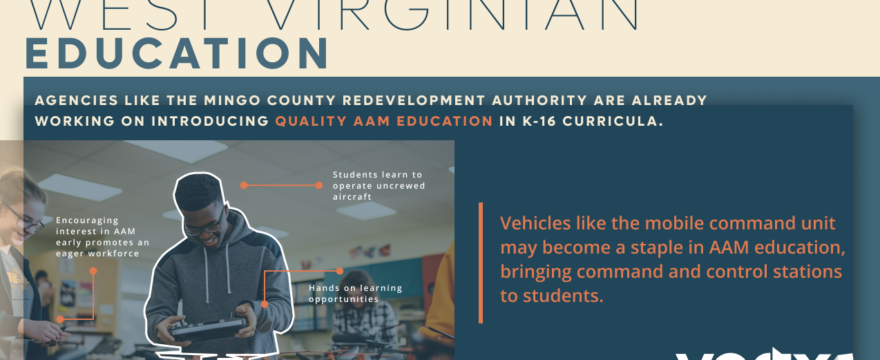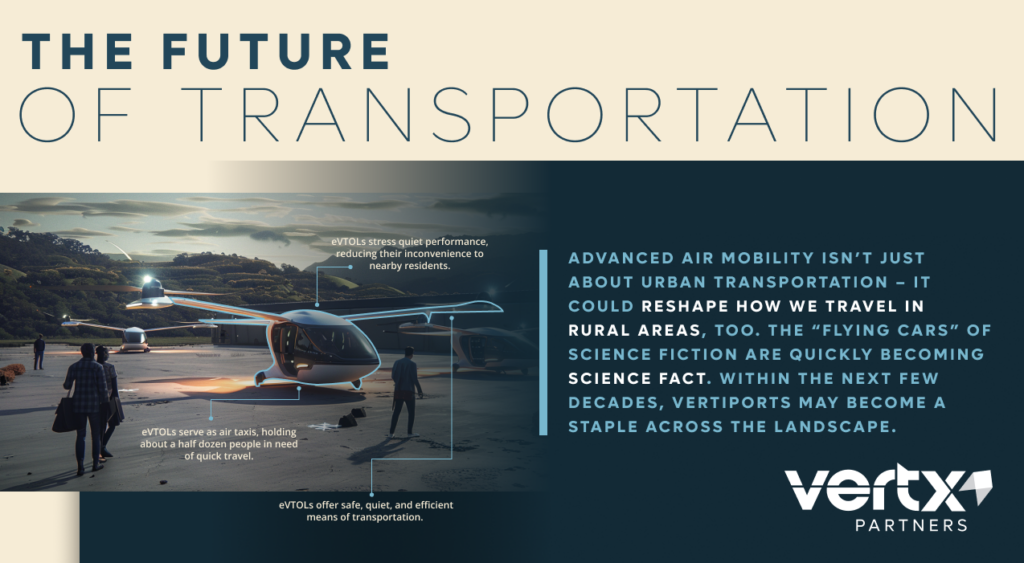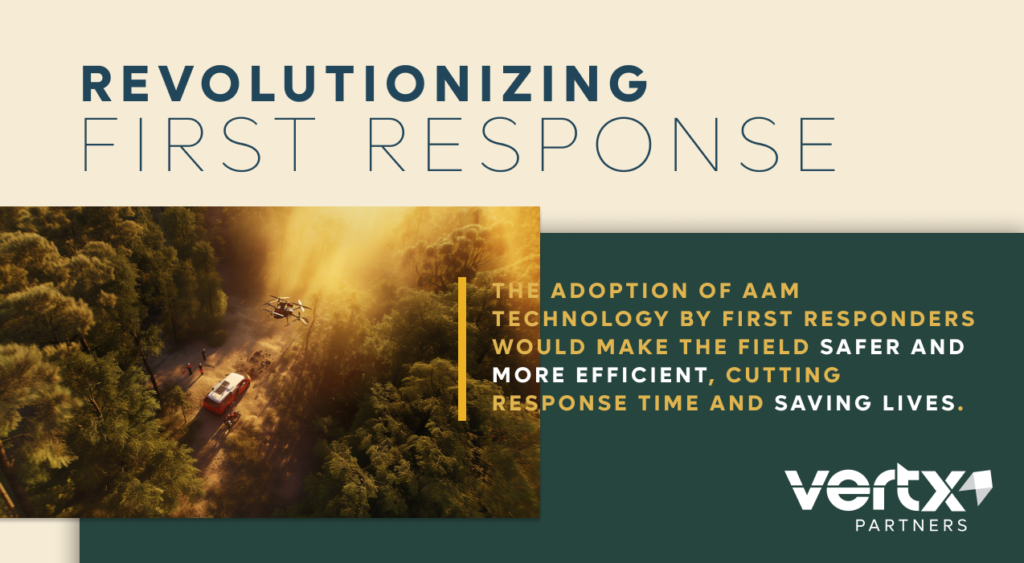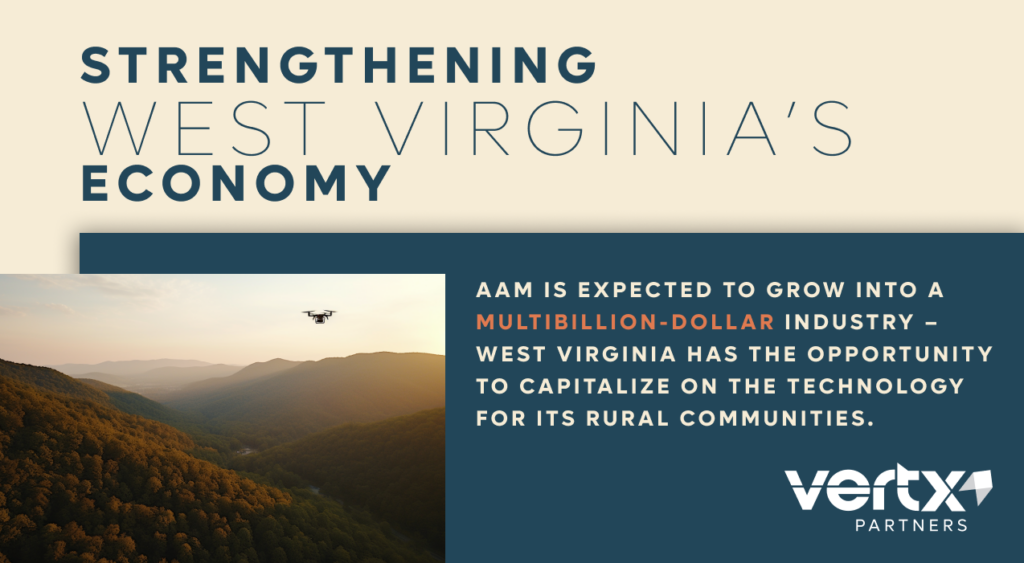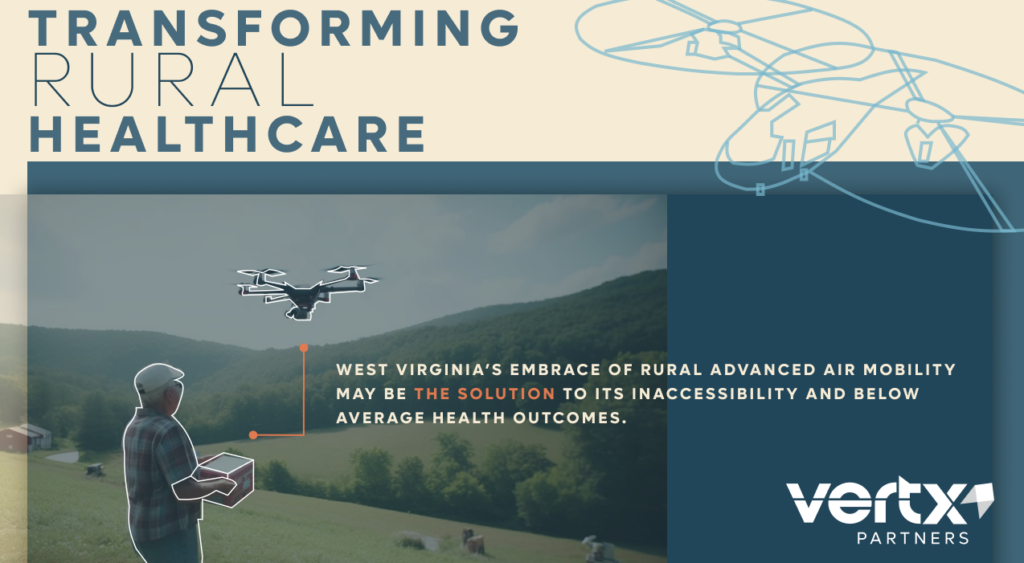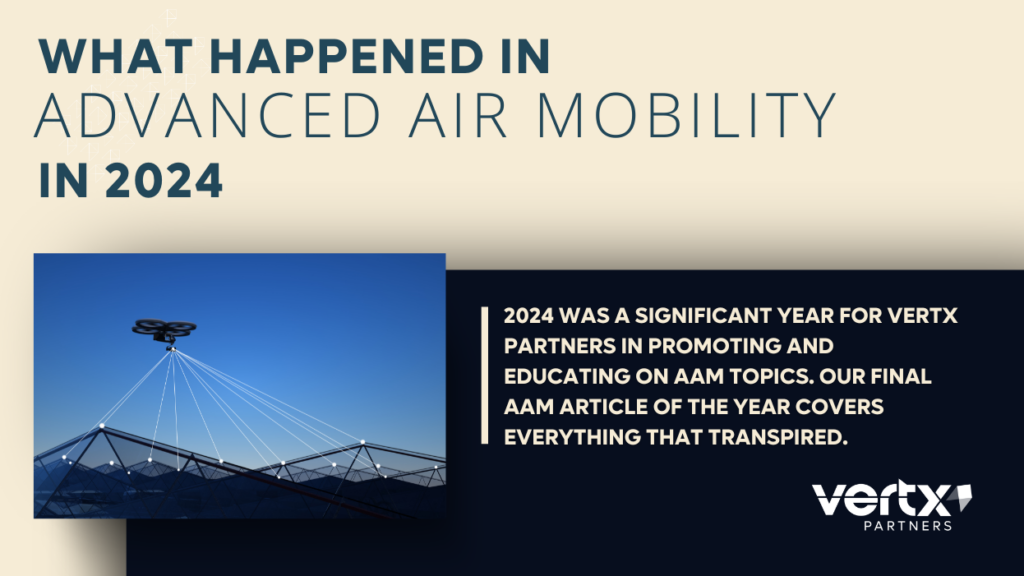The Vertx Partners team is working hard to bring Advanced Air Mobility to rural areas like West Virginia – here’s how AAM will improve WV education.

What does Rural Advanced Air Mobility education look like?
When we think of Advanced Air Mobility (AAM) education, it’s common to conjure images of high-tech flight schools and academies that teach pilots how to navigate towering skyscrapers as they taxi patrons in and out of cities. However, there’s a growing realization that AAM can also be a game-changer in rural settings. This is particularly true in a state like West Virginia, where traditional education systems face significant challenges.
The Vertx Partners team recently amassed organizations like NASA, the WV Department of Transportation, and the Bill Noe Flight School to help with its efforts. We believe it’s time to focus the conversation on Rural AAM and how it can impact West Virginia.
“2.3% of high school graduates today need to be in this industry to match where we are currently at in Advanced Air Mobility,” says Mary Cook, VP of Vertx Operations, highlighting how enlistment in AAM-related careers is crucial moving forward. “It’s critical for West Virginia to be a part of that solution.”
Vertx intends for the state to play its part, particularly concerning Rural Advanced Air Mobility. Rural AAM education will begin at Marshall before expanding to community and technical colleges and other academic institutions.
Depending on how one defines ‘rural,’ anywhere from 64% to 93% of West Virginians live in a rural area. Compare this figure to the ~20% of total rural Americans, for example. Additionally, West Virginia consistently ranks in the top five states most likely to be vacated by young, educated professionals.
How can the opportunities of Rural AAM address these challenges?
How to Combat WV ‘Brain Drain’
West Virginia is one of many states – most often predominantly rural – that suffers from the issues of ‘brain drain.’ Brain drain is the name given to the trend of educated professionals vacating the state in search of other career opportunities. This usually occurs shortly after graduation.
Rural Advanced Air Mobility education opportunities can help combat this trend. If West Virginia can become a pioneer in this field of education, the state can attract university students. Working with the economic opportunities fielded by AAM could create an attractive “jobs ecosystem.” This ecosystem would not only amass outsiders but also retain them and existing residents.
The Mingo County Redevelopment Authority’s Vision
Vertx recently announced its collaboration with the Mingo County Redevelopment Authority (MCRA). The MCRA is partnering with Vertx, Sinclair Community College, and other entities to develop state-of-the-art AAM opportunities for K-16 students statewide. This involves creating high-standard drone flight training and a mobile command unit to be brought to schools.
Azimuth, Inc. is spearheading the development of the mobile command unit that will serve as a vital component of the MCRA program. This mobile unit will include multiple operator stations, telescoping masts for airspace surveillance, a communication suite capable of up to 2.5-mile radius operation, operating software for low altitude monitoring and safety, rack and server systems, and computer/monitor systems. Additionally, a state-of-the-art Command & Control (C2) System will power the unit.
An initiative like the one undertaken by the MCRA is pioneering in this burgeoning field, particularly for Rural AAM. Vertx hopes that by introducing AAM to students early, they will be better equipped with the skills necessary to service a rapidly growing field.
MCRA and Vertx officials will first pilot the mobile command unit in Mingo County. If it’s successful, students around the state will have the opportunity to train in it.
Future AAM Programs
With the MCRA pioneering the bold strategy of Rural AAM education, others in the state may soon follow suit. Excellent aviation schools, like the Marshall University Bill Noe Flight School, may also pivot to adding AAM programs, such as training for pilots to become eVTOL “taxi pilots.”
Imagining West Virginia as a hub for Rural Advanced Air Mobility education is natural, given these preliminary efforts. Additionally, West Virginia offers an area where pilots can test Beyond Visual Line of Sight (BVLOS) operations. Students can also encounter variable weather and climate conditions, and real-world familiarity with uniquely rural challenges will be useful.
AAM Education as a Foundation
A future where West Virginia commits to exceptional and exemplary Rural AAM education solves the ongoing brain drain and positions the state as a national leader.
The initiatives implemented by the MCRA, Marshall University, the Bill Noe Flight School, Vertx Partners, and others are already laying the groundwork for a bright future. Additionally, it’s important to remember that education is just a foundation. The state can expect to build additional economic opportunities for AAM, such as its implementation in personal transit and healthcare.
If you’re interested in joining Vertx Partners’ growing network and keeping up to date on the latest AAM news, contact us today.
Become an Innovator With Us
Tell us about yourself, answer a few questions, and hit submit. It’s as easy as that to get started.
